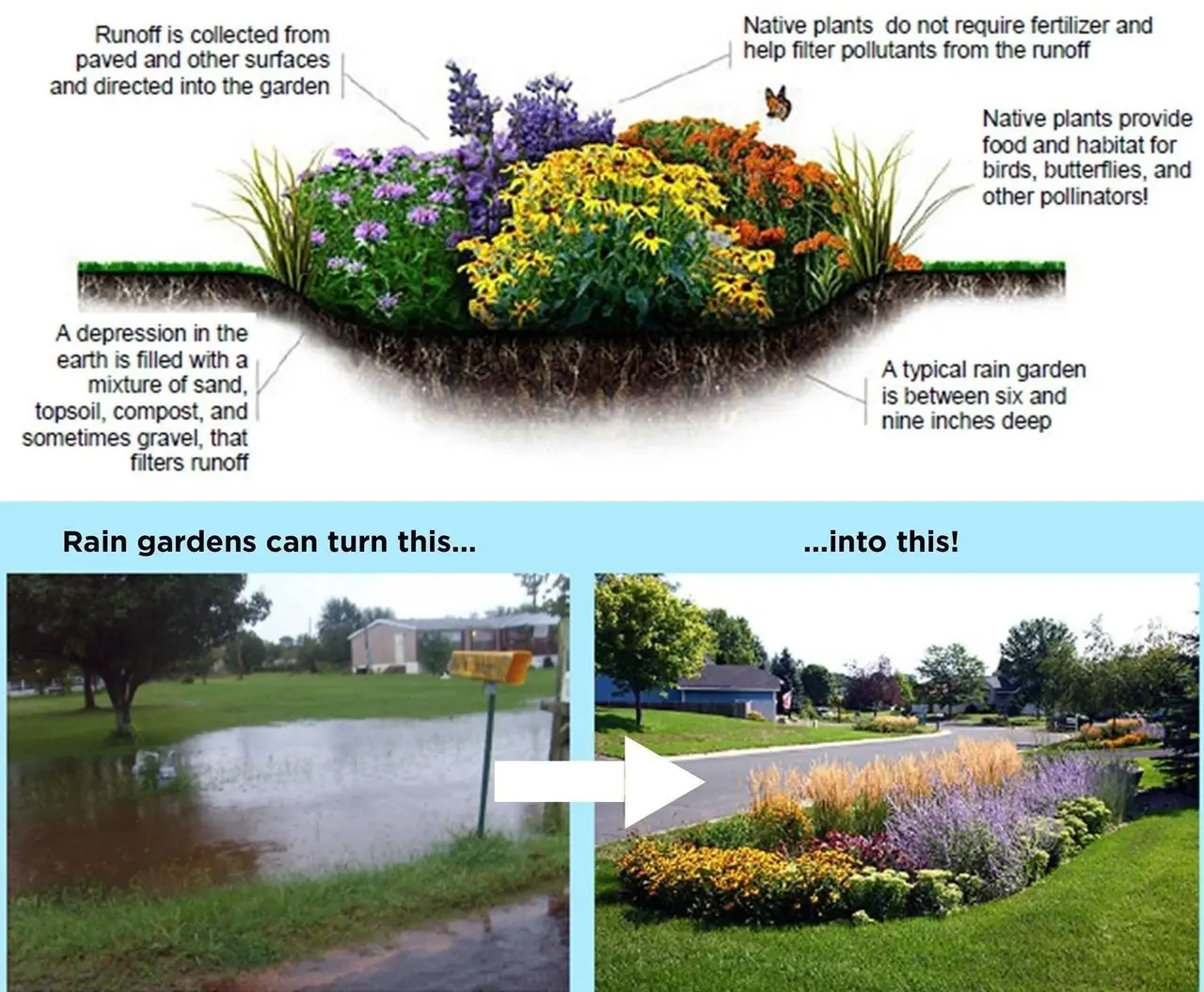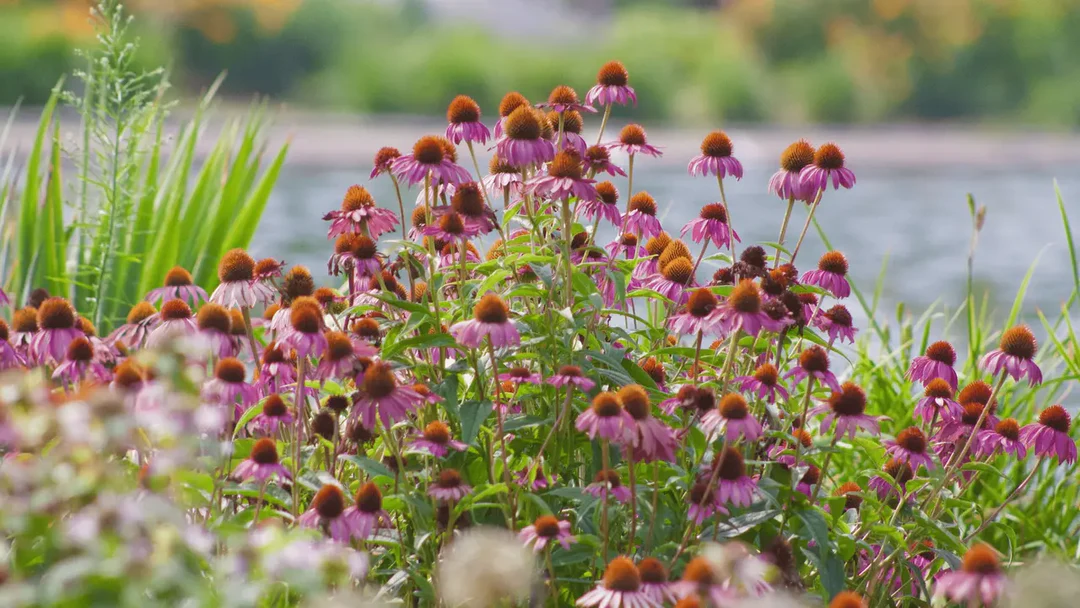Transform Your Space with a Texas Rain Garden

Texas rain gardens are an excellent way to improve your outdoor space while benefiting the environment. By capturing and filtering rainwater, they create beautiful, sustainable landscapes. Let’s delve into how to transform your garden with this eco-friendly idea.
Understanding the Concept of a Texas Rain Garden
A Texas rain garden is a shallow depression designed to capture and absorb rainwater runoff from roofs, driveways, and other surfaces. It prevents erosion, filters pollutants, and enhances water quality while adding aesthetic appeal to your space. These gardens are strategically situated to harness the natural flow of water, allowing it to seep into the soil instead of running off into sewers or storm drains. By incorporating rain gardens into urban landscapes, we mimic the natural water cycles disrupted by man-made structures. This approach is vital in urban planning because it helps mitigate the effects of heavy rains in Texas’s diverse climate, where rainfall can be both a blessing and a challenge.
Understanding how rain gardens work requires grasping their basic components. They typically consist of three core layers: a drainage substrate layer, an absorbent soil layer, and a decorative mulch layer. The drainage layer is made up of sand or gravel to promote quick water absorption, especially in areas where existing soil may not drain efficiently. The soil layer consists of compost-amended soil that provides a nutritious environment for native plants, encouraging their growth and stabilizing the garden structure. Atop this is a mulch layer that conserves moisture and controls soil erosion. These layers function together to capture stormwater and gradually release it into the underlying aquifers, thereby reducing flooding and enhancing groundwater recharge rates.
The Environmental Benefits of Rain Gardens
Rain gardens play a critical role in reducing urban runoff, which helps minimize the risk of flooding. They act as natural sponges, absorbing up to 30% more water than traditional lawns. This absorption capacity makes rain gardens an essential tool for managing stormwater, especially in areas susceptible to heavy rainfall. Beyond serving as a flood prevention strategy, rain gardens enhance the quality of local waterways by filtering out over 80% of sediments and pollutants from stormwater before they reach the groundwater. This filtration process improves water quality and ensures that soil nutrients are preserved within the garden’s ecosystem, fostering healthier and more vibrant plant life.
Beyond addressing immediate environmental issues, rain gardens support biodiversity by providing habitats for various local fauna. Species such as butterflies, bees, and birds are attracted to these gardens primarily because of the abundance of native plants. Additionally, rain gardens often serve as sanctuaries for larger fauna during dry seasons since the moisture-rich environment is ideal for wildlife sustenance and shelter. This ecological benefit also extends to humans, as gardens transform once barren landscapes into lush, green spaces that promote recreation and tranquility. Rain gardens are vital in fostering ecological balance and resilience by encouraging a symbiotic relationship between urban areas and nature.
Selecting the Right Plants for Your Rain Garden
Selecting native plants that can thrive in both wet and dry conditions is essential for a flourishing rain garden. Consider species like Gulf Muhly, Blue Mistflower, and Turk’s Cap, as they are resilient and provide vibrant colors and textures for your garden. Choosing native plants helps ensure that your rain garden thrives with minimal maintenance and adapts naturally to the local climate. These plants have evolved to tolerate Texas’s unique weather patterns, easily managing periods of excessive moisture followed by drought. Furthermore, they provide vital ecological benefits by offering local wildlife food and shelter, creating a balanced ecosystem within your garden.
When selecting plants for your rain garden, consider their root structure and growth patterns. Plants with deep, fibrous roots, such as Bushy Bluestem, are excellent for stabilizing the soil and improving water absorption rates. On the other hand, flowering plants like Ironweed thrive in the rain garden environment, offering an eye-catching aesthetic while serving practical purposes. Mix and match various plant species to create a diverse and visually engaging garden that cycles through different blooming seasons. This approach ensures that your rain garden remains lively and colorful throughout the year while maximizing its ecological services.
Step-by-Step Guide to Building Your Own Rain Garden
Begin by finding a suitable area, then create a shallow depression and amend the soil to enhance drainage. Gradually introduce your chosen plants, apply mulch to retain moisture, and finish with a simple edging to define the space. Ensure that the selected location is at least 10 feet away from your home to prevent water from seeping into the foundation. The best location would be a natural depression or an area where water collects after heavy rainfall. If such a spot is unavailable, consider creating one by redirecting downspouts from your roof toward the garden. Before you start digging, outline the garden’s perimeter with landscape paint to emphasize its shape and size, ensuring it blends seamlessly with the rest of your space.
Once you establish the location for your rain garden, you can start shaping the land. Begin by removing existing vegetation and creating a soil mix that combines the native soil with compost to enhance organic matter and drainage capabilities. Dig out a shallow basin and assess the site’s natural slope to ensure proper water flow toward the garden. Constructing a berm—an earth mound—on the downslope side can help contain runoff within the garden. Add rocks or logs on the berm to reinforce its structure, especially in areas prone to heavy water flow. After setting the foundation, plant your selected flora based on their water needs, positioning more water-tolerant plants in the center of the basin.
Maintaining Your Texas Rain Garden
Regular maintenance ensures the longevity of your rain garden. Periodically remove weeds, replace mulch, and inspect the garden after major storms to ensure it functions properly. With minimal care, your rain garden will thrive for years. In addition to basic upkeep, it is essential to monitor the performance of the drainage system, especially after a storm. Look for signs of standing water, which could indicate drainage issues, and address them by adjusting the soil composition or improving the drainage substrate layer. Weeding may require considerable effort initially, but over time, native plants will become established and outcompete common weeds, reducing the frequency of maintenance efforts.
Additionally, consider seasonal tasks such as pruning plants based on their growth cycles and replenishing mulch to maintain soil moisture and suppress weeds. In the long term, it may be beneficial to introduce new plant species to further diversify the garden’s habitat or replace any plants that aren’t thriving. Remember, a successful rain garden is dynamic, adapting over time to meet environmental challenges and opportunities. By nurturing your garden with care and attention to detail, you’ll create a vibrant, self-sufficient ecosystem that enhances your space and exemplifies responsible, sustainable gardening practices.
Embrace Sustainability with a Texas Rain Garden
A Texas rain garden is not just a beautiful addition to your landscape; it represents a step toward sustainability and demonstrates how natural elements can be utilized to create stunning and functional outdoor spaces. Start your rain garden journey today and make a positive contribution to both your environment and the planet.









Leave a comment